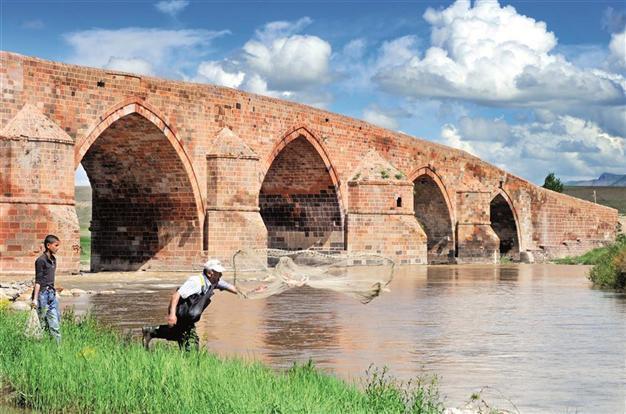Restorations increase in Erzurum to boost heritage, religious tourism
ISTANBUL - Anatolia News Agency

A total of five mosques have been restored in Erzurum while madrasas have also been taken under restoration. The aim of the restorations is to contribute to heritage and religious tourism in the area. DHA photo
As religious and heritage tourism becomes an increasingly important part of Turkey’s tourism sector, the restorations and new projects are set to enhance the interest in this tourism.
Thanks to restoration works, interest in historic structures is increasing, according to the Foundations Regional Director Kenan Ünğan. He said that many important structures in the eastern provinces on the Silk Road have been restored while many more places are awaiting restoration.
Noting that they had been restoring many of the mosques, madrasas, and “caravanserais” in the area, Ünğan said, “All of these are contributing to tourism. We have added lots of new artifacts to religious tourism.”
With the restoration works, the area will serve tourists and raise the interest in the historical buildings, according to Ünğan.
Adding that there were many important artifacts that belonged to the Foundations Regional Directorship, Ünğan said Ejder Caravansaries in Iğdır, nine mosques in Kars and also all the artifacts in Erzurum had been restored.
A total of five mosques have been restored in Erzurum while other are being restored, he said, and added that some of the mosques had also received environmental regulations and organization. The exteriors of the mosques have been given new facades.
“These artifacts are very important in terms of religious tourism. With the restoration works we are also working on urbanization and how to make the city more beautiful,” said Ünğan, adding that there were many abandoned buildings in the surroundings of the historical areas. “They need to be reorganized and remade,” he added.
“We have opened the environs and reorganized the area and also we have created a place where it possible to show those artifacts,” he said. Noting that they had demolished all the abandoned buildings around the artifacts, Ünğan said the area and its environs have changed a lot after the reorganization.
All the mosques, hans, hamams and shrines have been restored, he added, “there are five districts in Erzurum and in these districts a total of 22 works have been restored.”
“In the center of the city, mosques have been restored,” he said and added that Muratpaşa, İbrahimpaşa, Cennetzade, Zeynel, Bakırcı, Alipaşa mosques were among those restored.
Ünğan said that apart from the mosques the directorship had restored hans, hamams and shrines in the city. While a total of seven hamams were to be restored, five of them have been restored already.
Hamams and heritage“The hamams of the sheikh’s project have been finished and the buildings around the project have been institutionalized,” said Ünğan. The rest of the restoration project will start soon, he added.
Noting that the area was located on the Silk Road route, Ünğan said that was why there were so many Hans in Erzurum. “We are currently working on the restoration of Iğdır’s Werder Caravanserai. There is also Aşkale Karasu Han. There are 35 madrasas in Erzurum and the surrounding area.”
The Kurşunlu, Aslanpaşa and Ahmediye madrasas will also be restored. eorgian Oshki Church
The Turkish Culture Ministry will restore the Georgian Oshki Church in the eastern province of Erzurum’s Çamlıyamaç village. In accordance with a protocol between Turkey and Georgia, Turkey would restore a mosque in Georgia and Georgia would restore the Oshki Church of St. John the Baptist in Turkey in return. But the ministry lost hope in Georgia and now prepares to restore the church.
Recently, the New York-based World Monuments Watch included Erzurum’s Oshki Church in the list of the 100 Most Endangered Sites along with Istanbul’s Haydarpaşa Railway Station, and the Greek Orphanage on the Büyükada Island.
The church was built by the Georgian King Kurapalat Adarnese’s sons David and Prince Bagralt between 963 and 973. One of the church’s 1.5 meter columns adorned with stone etchings was stolen by plunderers three years ago. The plunderers removed a column in its entirety and replaced it with a wood block to prevent the church’s collapse.
